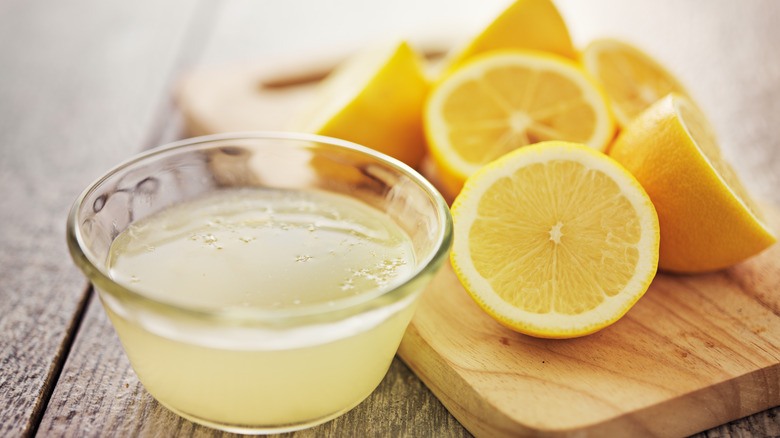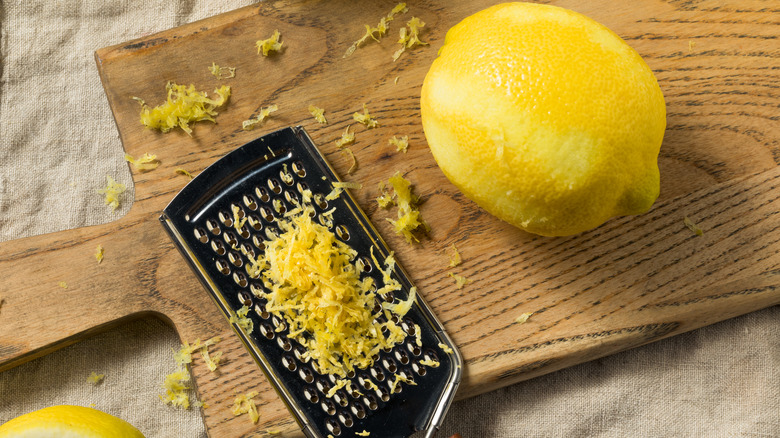Is It Better To Zest Or Juice Citrus First?
From desserts and cocktails to sauces or soups, there's nothing quite like adding a bit of citrus fruit to brighten up the flavors of a dish. While using the fruit juice is helpful to use in things like cocktails or sauces, other times the recipe may call for the zest. As defined by A Couple Cooks, utilizing the zest is the process of using the outside portion of citrus fruit and is often achieved by using a small grater on the peel.
Although they come from the same fruit, the zest and the juice have different flavors, since the zest contains natural oils that aren't as acidic as the juice, according to All Recipes. One important thing to note when you're zesting citrus is you should only use the colorful outside of the peel and not the white portion, also known as the pith, because it has a bitter taste, as noted by Bon Appétit. Since the juice and the zest have different uses and flavor profiles, are there any tricks to recipes that call for using both the zest and juice?
Always zest first
According to Ina Garten, if you're following a recipe that requires both the zest and the juice from a lemon or other citrus fruit, there's a crucial order that should be followed. In a Food Network YouTube video, Garten cooks lemon capellini, a pasta dish with a lemon butter sauce, and in the video, the "Barefoot Contessa" gives viewers a helpful hint when it comes to recipes that call for both the zest and the juice.
As Garten recommends, you should always zest any citrus before juicing it. And that tip is also echoed by The Spruce Eats, in an article that provides the low down on how to zest citrus fruits. The reason, according to Garten and The Spruce Eats, is that it's simply easier to zest a piece of citrus when it's whole versus trying to zest pieces or wedges. The next time you're making a dish that calls for zest and juice, remember to zest first to get the best results.

